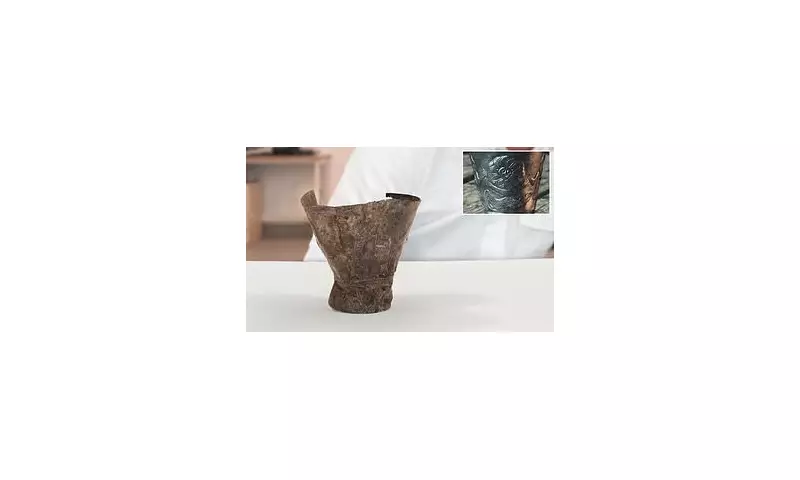
A stunning new analysis of a 4,300-year-old silver cup has identified what experts believe is the earliest known visual depiction of the creation of the cosmos, displaying themes that bear a remarkable resemblance to the biblical Book of Genesis.
The Ain Samiya Goblet: A Tiny Vessel with a Grand Story
The artifact, known as the Ain Samiya goblet, stands at a mere three inches tall. Despite its small size, it is decorated with incredibly intricate images featuring snakes, mythical chimeras, gods, celestial bodies, and a mysterious 'boat' of light.
It was first discovered back in 1970 in a burial pit within the Judean Mountains of the West Bank, near the Palestinian village of Ain Samiya, where archaeologists had uncovered hundreds of ancient graves. For decades, the cup has been on display at the Israel Museum, but its full significance has only recently been deciphered.
Decoding the Ancient Imagery
A recent study has finally unlocked the goblet's secrets, revealing that its scenes depict the cosmos in two distinct states: the chaos before formation and the ordered universe after.
Dr Eberhard Zangger, president of the Luwian Studies Foundation and one of the study's authors, provided a clear explanation. "The left side of the goblet represents the chaotic state of the cosmos before creation, while the right side shows the ordered universe after," he said. "This artifact gives us an incredibly detailed picture of how people in 2300 BC imagined the cosmos before creation."
The parallels to the Bible are striking. The description in Genesis 1:1-4 of an unformed and void earth, followed by the creation of light and the separation of light from darkness, closely mirrors the narrative illustrated on the ancient goblet.
Dr Zangger emphasised the rarity of this find, noting that while written references to these creation concepts are ancient, a visual depiction from this early period is extremely rare. This makes the Ain Samiya goblet a unique window into the ancient Near Eastern understanding of the universe's beginnings.
A Journey Through Time and Myth
When the goblet was first unearthed, scholars initially thought its imagery depicted scenes from the Babylonian creation myth, the 'Enuma Elish'. However, Dr Zangger and his team suspected the cup was far older than first documented.
"Because there was so much pottery [in the burial], it's pretty obvious that the grave is from about 2200 BC, while if we look at the iconography, we find a resemblance to that of 2300 BC," he explained to The Times of Israel. "So the time discrepancy between the production and the deposition is probably not more than 100 years."
The study concluded that the goblet's design mirrors that of the Early Dynastic III culture in Mesopotamia, dating between 2900 and 2350 BC. However, researchers suggest the cup may have actually been produced in northern Syria.
The designer of the depiction achieved a great feat by adding certain new components to the long-standing narratives about the creation of the world, thus creating a unique vessel. From Syria, the goblet is believed to have travelled along well-travelled caravan routes to the southern Levant, where it was placed in a tomb around 2200 BC, finding its final resting place.
The study, which was published in the peer-reviewed Journal of the Ancient Near Eastern Society “Ex Oriente Lux”, states that the burial object's purpose was likely to connect the soul of the deceased with the journey of the sun, ultimately guiding it to heaven.





